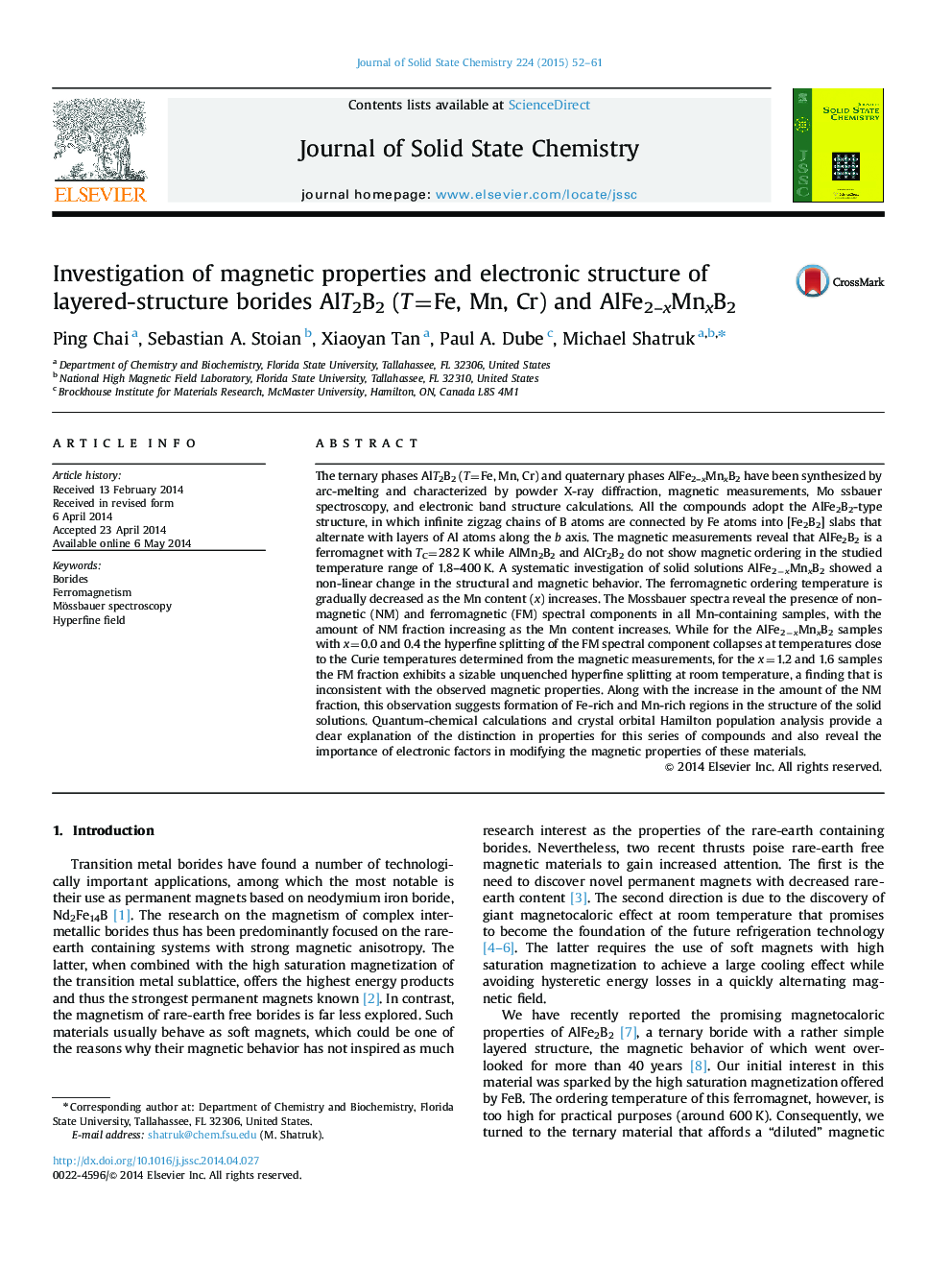| Article ID | Journal | Published Year | Pages | File Type |
|---|---|---|---|---|
| 1329803 | Journal of Solid State Chemistry | 2015 | 10 Pages |
•AlT2B2 (T=Fe, Mn, Cr) and AlFe2−xMnxB2 were prepared by arc‐melting.•Bulk ferromagnetism of AlFe2B2 is gradually suppressed by the introduction of Mn.•AlMn2B2 and AlCr2B2 do not exhibit magnetic ordering.•Nonmagnetic (Mn‐rich) and ferromagnetic (Fe‐rich) clustering in AlFe2–xMnxB2.•Ferromagnetism is suppressed due to weakening of antibonding T–T interactions.
The ternary phases AlT2B2 (T=Fe, Mn, Cr) and quaternary phases AlFe2–xMnxB2 have been synthesized by arc-melting and characterized by powder X-ray diffraction, magnetic measurements, Mössbauer spectroscopy, and electronic band structure calculations. All the compounds adopt the AlFe2B2-type structure, in which infinite zigzag chains of B atoms are connected by Fe atoms into [Fe2B2] slabs that alternate with layers of Al atoms along the b axis. The magnetic measurements reveal that AlFe2B2 is a ferromagnet with TC=282 K while AlMn2B2 and AlCr2B2 do not show magnetic ordering in the studied temperature range of 1.8–400 K. A systematic investigation of solid solutions AlFe2−xMnxB2 showed a non-linear change in the structural and magnetic behavior. The ferromagnetic ordering temperature is gradually decreased as the Mn content (x) increases. The Mössbauer spectra reveal the presence of non-magnetic (NM) and ferromagnetic (FM) spectral components in all Mn-containing samples, with the amount of NM fraction increasing as the Mn content increases. While for the AlFe2−xMnxB2 samples with x=0.0 and 0.4 the hyperfine splitting of the FM spectral component collapses at temperatures close to the Curie temperatures determined from the magnetic measurements, for the x=1.2 and 1.6 samples the FM fraction exhibits a sizable unquenched hyperfine splitting at room temperature, a finding that is inconsistent with the observed magnetic properties. Along with the increase in the amount of the NM fraction, this observation suggests formation of Fe-rich and Mn-rich regions in the structure of the solid solutions. Quantum-chemical calculations and crystal orbital Hamilton population analysis provide a clear explanation of the distinction in properties for this series of compounds and also reveal the importance of electronic factors in modifying the magnetic properties of these materials.
Graphical abstractWe follow a gradual evolution of magnetic properties in a series of ternary borides AlT2B2, from non-magnetic AlCr2B2 and AlMn2B2 to ferromagnetic AlFe2B2.Figure optionsDownload full-size imageDownload as PowerPoint slide
